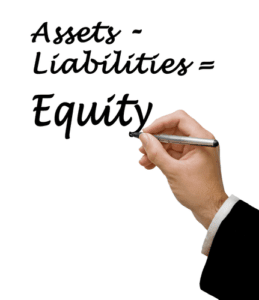
how to write a deposit slips are most often used when customers visit a brick-and-mortar bank branch. They can be used to make deposits both in the lobby and in the bank’s drive-through lane. In addition, some older ATMs require customers to use a deposit slip when depositing cash or checks. However, a mobile check deposit is considered a safe and secure transaction. Also, you must be logged in to your mobile banking app to use a mobile check deposit feature, and you’ll receive confirmation and a receipt that the check was processed. A deposit slip is a small paper form that a bank customer includes when depositing funds into a bank account.
- The teller may also give you a copy of your submitted deposit slip.
- The best way to know how much you can spend is to check your available balance or ask bank staff when the funds will become available.
- We’ll also include an example of a deposit slip for easy reference.
- Similarly, fewer ATMs require users to submit a deposit slip because new technology allows the computers in ATMs to read checks and count cash.
- Also, businesses may be able to deposit checks using a check scanner, depending on the bank.
- A deposit slip states the date, the name of the depositor, the depositor’s account number, and the amounts being deposited.
- You typically fill out a deposit slip to deposit cash or checks at a bank or credit union branch.
More Resources on Small Business Accounting
Deposit slips can be beneficial to both the bank and the client. Banks use submitted deposit slips as a written record of funds deposited during the day. This helps banks make sure that there are no funds left unaccounted for.

Commitment to Our Readers

Qualifying accounts can even access their paycheck up to two days early. Learning how to fill out a deposit slip is a straightforward process in which you provide your name, account number, and money for deposit in the form of cash and checks. This final step isn’t always necessary because some banks don’t require depositors to sign their deposit slips.
More than 165 years of putting customers first.
It is a document that requires key personal and financial information such as your name, account number, and deposit amount. Deposit slips can be valuable for tracking transactions and ensuring your money is directed to your bank account correctly. You typically don’t need to fill out a deposit slip when depositing a cashier’s check. However, some banks and credit unions may require you to fill out a special deposit slip if you’d like the money from a cashier’s check to be available the next business day.
- It’s filled out much like a regular check, but it includes various deposit kinds.
- SoFi does not guarantee or endorse the products, information or recommendations provided in any third party website.
- Choose from various deposit invoice templates and start getting paid digitally to reduce the need for deposit slips altogether.
- The routing number is typically at the bottom of the deposit slip.
- Qualifying accounts can even access their paycheck up to two days early.
- Typically you just confirm the dollar amount and review any account and routing information from the check.
- It is a document that requires key personal and financial information such as your name, account number, and deposit amount.
- You can learn more about GOBankingRates’ processes and standards in our editorial policy.
- When you are depositing money into your account through the bank’s mobile app, you do not have to fill out a deposit slip.
- Next, you’ll write the amount you’re depositing, counting both cash and checks.
- It includes fields for essential information such as the account holder’s name, account number, date, and the amount being deposited, with sections for cash and checks.
If you can’t find one in either of those places, you can ask for one at the teller window at your bank. For example, if you’re a credit union member using a different credit union’s branch (via shared branching), you’ll need to write in the name of your “home” credit union. If you have pre-printed deposit slips from the back of your checkbook, this is already done for you. Here’s a deposit slip example to show you where to place the correct information. However, deposit slip designs may vary based on the bank or credit union. If you want to stay organized, you can also put the cash in an envelope, and the bank teller will take it from there.

- A checking deposit slip is a small written form that is used to place funds into your account.
- It indicates the deposit date, name and account number of the depositor, and the monetary amount to be deposited in the form of checks, and cash.
- When you print with online software, you get to keep an itemized copy of your deposit slip independent from the bank.
- This compensation may impact how and where products appear on this site.
- Initially, the process might seem a bit tricky, but once you get the hang of it, you will have an easier time filling out the form.
- According to federal law, banks must maintain deposit slips representing transactions over $100 for at least five years[1].


